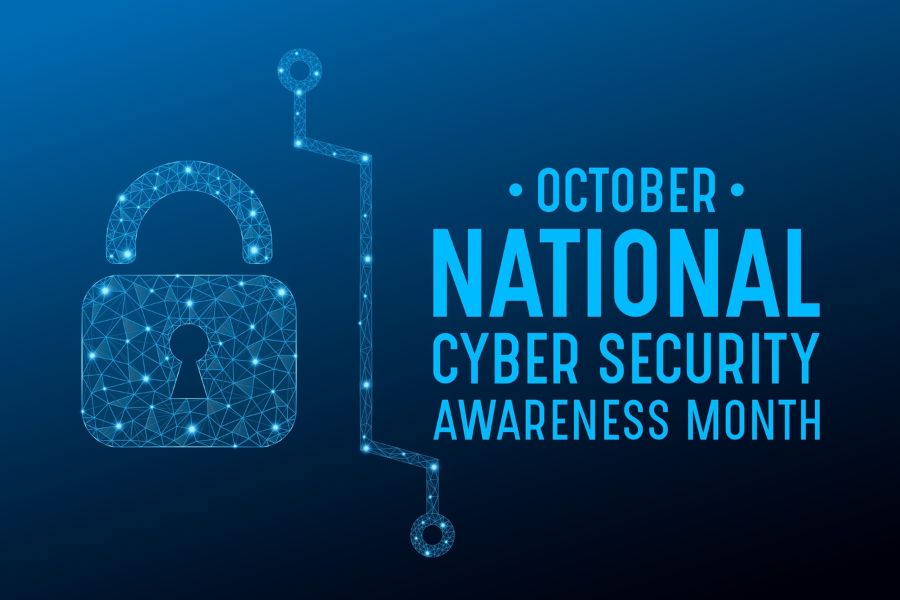The Cyber Security Skills Gap: Challenges and Opportunities
June 22, 2023, 6 min read
Cybersecurity has existed for decades, but it has only recently received increasing attention from the media and the concentration of organizations, governments, and the general public.
As a result of the demands of an increasingly tech-savvy populace for constant innovation and instantaneous access to a wide range of services, resources, and data, the world we now inhabit relies on a vast and intricate network of digital technologies. More than ever, cybercriminals are taking advantage of the expanded IT landscape to probe for security holes in businesses, where they stand a better chance of succeeding and can therefore reap more rewards.
Cybersecurity has existed for decades, but it has only recently received increasing attention from the media and the concentration of organizations, governments, and the general public. Directly, if we are the target, and indirectly, due to the unavailability of services we rely on, cyberattacks are reported daily in newspapers and on television news.
Boards are also taking cyber security more seriously, with many now considering it a top risk and being comfortable enough to discuss it and include it in strategic planning. This shift in perspective has been prompted by the increased concern and demand from customers, partners, employees, and governments to appropriately manage cyber security risks and the operational, financial, reputational, and legal effects stemming from widely publicized cyber catastrophes.
According to the 2021 (ISC)2 Cyber Security Workforce Study, the global shortage of cyber security professionals is predicted at more than 2,72 million positions to be filled, necessitating a growth of the workforce of 65 percent to secure organizations’ vital assets adequately.
Therefore, businesses need to find and implement novel strategies to overcome this obstacle, and the solution may be as simple as viewing this difficulty as an opportunity in disguise.
Invest in Your People and Help Them Grow
Research by the UK government’s Department of Digital, Culture, Media, and Sport found that 51 percent of enterprises in the country now need more than the most fundamental cyber security skills. Because of this, businesses are vulnerable to attacks from bad actors. However, half of the partners consider cybersecurity one of their most important solution areas, and they plan to increase their expertise.
Many businesses have begun providing their staff with basic cybersecurity training through online courses. Basic terminology, basic attack tactics, and how to apply cyber security defense are covered, giving students a firm grounding in the field. Employees may be better able to anticipate final customers’ demands and share that information with experts who can meet those needs.
Companies shouldn’t just consider bringing in outside talent and developing their employees’ talents. Since there aren’t enough people with cybersecurity skills to go around, hiring only gets you so far, this is the only viable option. To achieve this goal, businesses should offer financial incentives to workers who take and pass cybersecurity training courses, ensuring that their in-house talent meets the standards set by the industry.
Find and Hire the Best People Possible
According to ISC’s cyber security Workforce Study 2022, the size of the worldwide cyber security workforce has reached 4.7 million persons. However, there is still a global deficit of 3.4 million cybersecurity workers. However, Kaspersky predicts that by the end of the decade, global demand for cybersecurity experts will exceed supply by a third.
Taking a broader view, Cyber Security Ventures discovered that there would be 3.5 million unfilled cyber security jobs worldwide by 2021, up from one million in 2013. There would still be 3.5 million job openings in this sector by 2025. To guarantee the cyber security skills gap closes and stays closed, attracting and keeping top talent in the field is crucial.
The gender gap is also evident in the field of cyber security. According to the Women in Cyber Security 2022 Report 2022, women will make up 25% of the cyber security workforce worldwide. Women will comprise 30% of the cyber security workforce worldwide by 2025 and 35% by 2031. Compared to prior years, this is an improvement. The percentage of women working in cyber security increased from 10% in 2013 to 20% in 2019. However, more work needs to be done in the field to increase the number of women in leadership positions.
Spend Wisely on Human Capital
The high barriers to admission, where applicants are sometimes expected to have decades of expertise, should be lowered as a first step. Because of this, the market is suffering from a shortage of qualified individuals.
The solution is for businesses to hire people with a wide range of backgrounds and skill sets who are also eager to learn. Companies should be willing to invest in the training and certification that will bring about the next generation of experts in their field. Educating workers is a direct and efficient method of bridging the cyber security skills gap.
Companies must understand that they cannot fill the cyber security skills gap through hiring alone, particularly when necessary workers do not exist. Companies need to put money into their employees’ education and training and provide opportunities to earn certifications acknowledged by their field.
Given that the success of many cyberattacks hinges on user error, this is one of the best investments any company can make in its security strategy. Companies need to take the skills gap more seriously, and partners should do more to assist clients by providing training and delivering cybersecurity solutions.
Make a Difference in the Online World
Incorporate interns and trainees into your Team, be bold, and work with the academic community. Amazing youthful talents exist, ready and waiting for an opportunity and some coaching to flourish and bring a new perspective, boundless enthusiasm, and dedication that can significantly benefit team spirit and productivity. Even if they depart, you’ll have done your part to grow the cybersecurity community and address the sector’s skills gap. Consider your time spent productively as an investment rather than a waste.
Expect Turnover and Welcome it with Open Arms.
There will come a time when our team members decide to move on, accepting new challenges and pursuing new chances elsewhere. We need to get this as inevitable and look on the bright side, as it may present an opening for a deserving team member to move into a more senior role and take on additional duties as the company continues on its upward trajectory. Managers of people should delight in their employees’ achievements because it is our job to get the best out of them and help them along the way.
Take Action and Alter the Current Climate
The growing prevalence of cybercrime has highlighted the need for security and adequately funded personnel.
Many people in cyber security are experiencing burnout and stress from their jobs. Sixty-five percent of SOC professionals respondents said that anxiety at work has made them seriously consider leaving their current position.
Focusing on the people already working in cyber security is crucial as we expand the sector. Leaders will inevitably experience stress and burnout.
Give people the tools they need to cope with the issue positively.
To prevent future bouts of exhaustion and tension, could you reflect on the circumstances that led to the current state of affairs?
Future professionals will support the healthy, supportive work environments this strategy fosters.
Make Cyber Security Education Available and Acceptable
The question “How do I start a career in cyber security?” is one the most heard and seen trends. This should be unique, especially given the widening cyber security skills gap.
The reality is that there are few opportunities to gain the necessary skills and knowledge to break into the sector through formal school or training. In addition, the ever-changing nature of the threats themselves makes it challenging for conventional education methods to stay up.
There needs to be a two-pronged approach to fixing this.
Conclusion
The cyber security skills gap is a serious issue, but we can overcome it with the right approach. Think about how you now handle information technology security. Ask yourself if you’re putting money into the correct areas: people, procedures, and tools. Will the way you’re doing things exacerbate the shortage of available workers or help the information security industry grow and thrive? To that end, let’s collaborate.































